
The Matsudaira clan was a Japanese samurai clan that descended from the Minamoto clan. It originated in and took its name from Matsudaira village, in Mikawa Province. During the Sengoku period, the chieftain of the main line of the Matsudaira clan, Matsudaira Motoyasu became a powerful regional daimyo under Oda Nobunaga and Toyotomi Hideyoshi and changed his name to Tokugawa Ieyasu. He subsequently seized power as the first shōgun of the Tokugawa shogunate which ruled Japan during the Edo period until the Meiji restoration of 1868. Under the Tokugawa shogunate, many cadet branches of the clan retained the Matsudaira surname, and numerous new branches were formed in the decades after Ieyasu. Some of those branches were also of daimyō status.

The Sakakibara clan was a Japanese samurai clan who rose to prominence during the Edo period under the Tokugawa shogunate. At the time of the Meiji restoration, the clan served as daimyō of Takada Domain in Echigo Province. The Sakakibara were one of the four families who enjoyed the privilege of providing a regent during the minority of a Shōgun. Under the Meiji government's kazoku peerage system, the head of the clan had the title of viscount (shishaku).

The Ogasawara clan was a Japanese samurai clan descended from the Seiwa Genji. The Ogasawara acted as shugo (governors) of Shinano Province during the Sengoku period, and as daimyō of territories on Kyūshū during the Edo period (1600–1867).

The Itakura clan is a Japanese clan which came to prominence during the Sengoku period. The family claimed descent from Shibukawa Yoshiaki, the son of Ashikaga Yasuuji, a relative of the Ashikaga shōguns. Over time, the clan evolved into several branches which were daimyō, ruling the Bitchū-Matsuyama, Niwase, Fukushima, and Annaka Domains.

The Hitoyoshi Domain was a Japanese domain of the Edo period. It was associated with Higo Province in modern-day Kumamoto Prefecture.

Matsushiro Domain was a feudal domain under the Tokugawa shogunate of Edo period Japan. It is located in Shinano Province, Honshū. The domain was centered at Matsushiro Castle, located in what is now part of the city of Nagano in Nagano Prefecture.

The Arima clan was a Japanese samurai clan.

The Ōkubo clan were a samurai kin group which rose to prominence in the Sengoku period and the Edo periods. Under the Tokugawa shogunate, the Ōkubo, as hereditary vassals of the Tokugawa clan, were classified as one of the fudai daimyō clans.
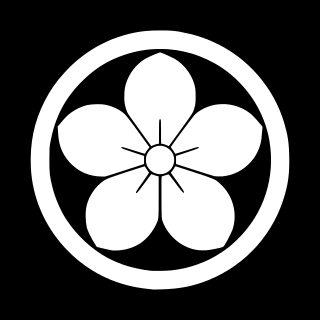
The Ōta clan was samurai kin group which rose to prominence in Sengoku and Edo period Japan. Under the Tokugawa shogunate, the Ōta were hereditary vassals of the Tokugawa clan.

The Makino clan are a daimyō branch of the samurai Minamoto clan in Edo period Japan.

Miyake clan were a samurai kin group which rose to prominence in the Sengoku period and the Edo period. Under the Tokugawa shogunate, the Miyake were hereditary vassals of the Tokugawa clan. The Miyake were classified as one of the fudai daimyō clans.

Naitō clan is a Japanese samurai kin group. The clan claims its descent from Fujiwara no Hidesato. The Naitō became daimyōs during the Edo period.
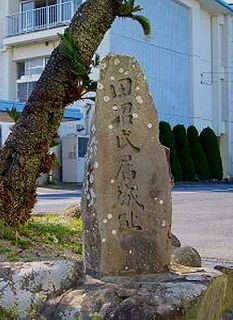
Sagara Domain was a Japanese feudal domain under the Tokugawa shogunate of Edo period, located in Tōtōmi Province. The domain was centered in what is now the Sagara district of Makinohara city, Shizuoka Prefecture. The site of the Sagara jin'ya is now the Sagara Elementary School.
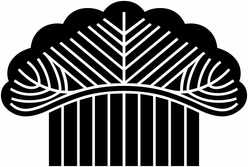
Nishio clan was a Japanese samurai kin group.

The Yonekura clan was a cadet branch of the Takeda clan of Kai Province, some members of whom rose to positions of importance within the administration of the Tokugawa shogunate in mid-Edo period Japan.
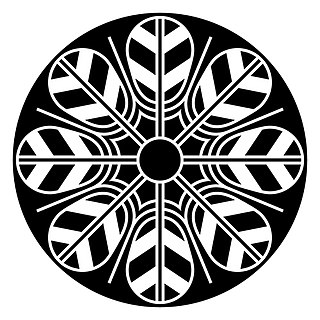
The Inoue clan was a samurai clan which came to prominence from the late Kamakura through Edo periods in Japanese history, descending from the Seiwa Genji. Mention of an Inoue surname is found in Nara period records; however, the Inoue clan which later became prominent in the Edo period traces its antecedents to the Seiwa Genji line founded by Minamoto no Yorisue, grandson of Minamoto no Mitsunaka in the late Heian period. Minamoto no Yorisue, settled in a place called "Inoue" in Takai District, Shinano Province, and the Inoue clan of Shinano Province were the main branch, but there were other branches in Harima, Aki and Mikawa Provinces. Under the Tokugawa shogunate, the Inoue, as hereditary vassals of the Tokugawa clan, were classified as one of the fudaidaimyō clans.

The Ōoka clan were a samurai kin group which rose to prominence in the Edo period. Under the Tokugawa shogunate, the Ōoka, as hereditary vassals of the Tokugawa clan, were classified as one of the fudaidaimyō clans.

Tsuchiya clan is a Japanese samurai kin group.

The Tōdō clan was a Japanese samurai clan of humble origins from the Inukami District of Ōmi Province. Under Hideyoshi, Tōdō ruled Uwajima at Iyo province. During the Edo period, the Tōdō ruled most of Ise Province and all of Iga Province as daimyō of Tsu Domain under the Tokugawa shogunate.
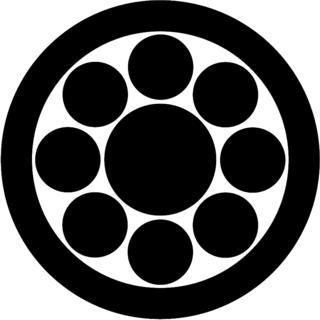
Tozawa clan was a Japanese samurai kin group from Mutsu and Dewa Provinces who ruled as daimyō of Shinjō Domain under the Edo period Tokugawa shogunate. The Tozawa clan residence in Edo was located near the temple of Zōjō-ji.




















